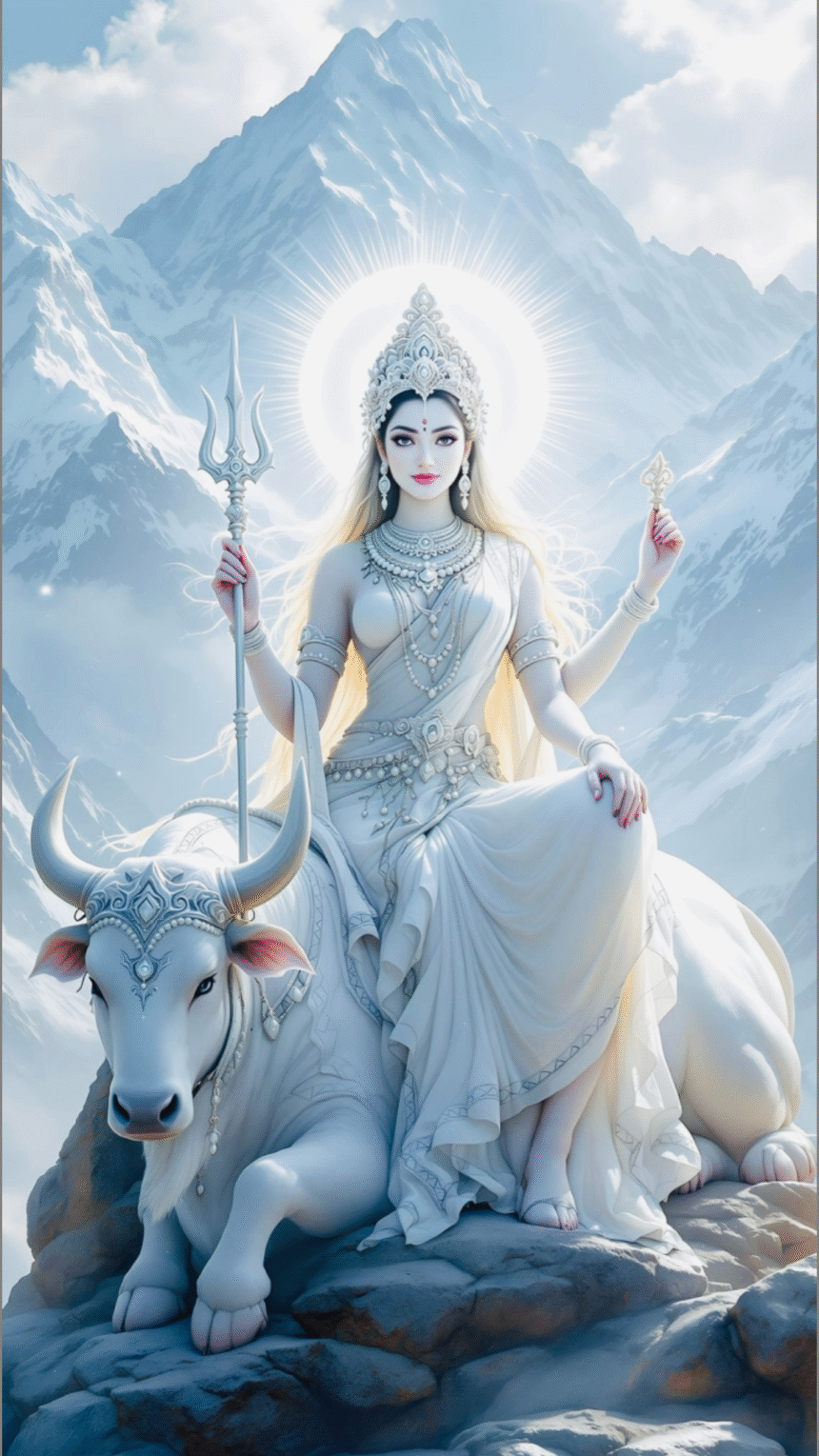7 Powerful Hindu Goddesses Whose Stories Will Inspire You
Hinduism, one of the world’s oldest religions, is rich in spiritual stories, divine symbolism, and powerful deities. Among these, Hindu Goddesses hold a special place, representing strength, wisdom, prosperity, and protection. Revered across India and beyond, goddesses not only symbolize divine energy but also inspire millions to embrace courage, virtue, and devotion. In this article, we explore the history, facts, timeline, significance, FAQs, impact on daily life, and societal importance of Hindu Goddesses in a human-friendly way.
- History of Hindu Goddesses
- Popular Hindu Goddesses and Their Significance
- 1. Goddess Durga
- 2. Goddess Lakshmi
- 3. Goddess Saraswati
- 4. Goddess Kali
- 5. Goddess Parvati
- 6. Goddess Annapurna
- 7. Goddess Radha
- Timeline of Hindu Goddess Worship
- Significance of Hindu Goddesses
- FAQs About Hindu Goddesses
- Impact on Daily Life
- Observance and Wishing
- Conclusion: Why Hindu Goddesses Matter
History of Hindu Goddesses
The worship of female divine power or Shakti in Hinduism dates back thousands of years:
Indus Valley Civilization (c. 3300–1300 BCE): Archaeological findings suggest the existence of mother goddess figurines, indicating reverence for feminine divine energy.
Vedic Period (c. 1500–500 BCE): Early Vedic texts mention goddesses like Saraswati (knowledge) and Ushas (dawn).
Classical Hinduism (c. 500 BCE–1200 CE): Hindu Puranas, epics, and texts like the Devi Mahatmya expanded goddess worship, emphasizing Shakti as cosmic energy.
Medieval Period: Saints and poets like Meera Bai, Tulsidas, and Surdas highlighted goddess devotion through bhajans, poetry, and temples.
Modern Era: Goddess worship continues widely, celebrated through festivals such as Navratri, Durga Puja, and Lakshmi Puja, inspiring devotion, cultural practices, and social unity.
Popular Hindu Goddesses and Their Significance
1. Goddess Durga
Symbolism: Strength, protection, and courage.
Iconography: Often depicted riding a lion, holding weapons in multiple arms.
Significance: Defeats evil, inspires courage and resilience.
Observance: Worshiped during Navratri, celebrated for nine nights of devotion.
2. Goddess Lakshmi
Symbolism: Wealth, prosperity, and well-being.
Iconography: Depicted with golden coins flowing from her hands, standing on a lotus.
Significance: Brings abundance and encourages gratitude and generosity.
Observance: Worshiped during Diwali and Lakshmi Puja, symbolizing new beginnings and financial stability.
3. Goddess Saraswati
Symbolism: Knowledge, learning, and creativity.
Iconography: Depicted with a veena, books, and swan, symbolizing wisdom.
Significance: Encourages education, arts, and intellectual growth.
Observance: Worshiped on Vasant Panchami, especially by students and teachers.
4. Goddess Kali
Symbolism: Transformation, destruction of evil, and empowerment.
Iconography: Fierce, dark-skinned, with a garland of skulls.
Significance: Inspires fearlessness, spiritual awakening, and inner strength.
Observance: Worshiped during Kali Puja and Diwali in Eastern India.
5. Goddess Parvati
Symbolism: Love, devotion, and fertility.
Iconography: Often depicted with Lord Shiva, symbolizing marital harmony.
Significance: Encourages family values, devotion, and patience.
Observance: Worshiped in various forms like Gauri Puja and Teej.
6. Goddess Annapurna
Symbolism: Nourishment, sustenance, and abundance.
Iconography: Holding a bowl of food, feeding devotees.
Significance: Represents the importance of food, sharing, and care for humanity.
Observance: Celebrated in temples and homes with offerings of grains and meals.
7. Goddess Radha
Symbolism: Love, devotion, and divine beauty.
Iconography: Seen with Lord Krishna, expressing unconditional love.
Significance: Teaches devotion, purity, and emotional depth.
Observance: Celebrated during Janmashtami and Radha Ashtami.
Timeline of Hindu Goddess Worship
3300–1300 BCE: Mother goddess figurines in the Indus Valley Civilization.
1500–500 BCE: Early Vedic mentions of goddesses like Saraswati and Ushas.
500 BCE–1200 CE: Puranic texts such as Devi Mahatmya codify goddess worship.
Medieval Era: Bhakti movement emphasizes goddess devotion through songs, poetry, and temples.
18th–19th Century: Expansion of temples and festivals dedicated to goddesses.
Modern Era: Festivals like Durga Puja, Navratri, and Lakshmi Puja gain global recognition.
Significance of Hindu Goddesses
Hindu Goddesses carry symbolic, spiritual, and societal significance:
Empowerment: Represent strength, courage, and fearlessness, especially for women.
Prosperity: Symbolize wealth, abundance, and well-being, guiding ethical financial living.
Wisdom: Inspire education, creativity, and learning, especially through Saraswati.
Spiritual Growth: Encourage devotion, meditation, and moral discipline.
Cultural Preservation: Sustain rituals, festivals, and arts across generations.
Community Bonding: Festivals create unity, collective joy, and social harmony.
Ethical Guidance: Provide moral role models through stories of virtue and bravery.
FAQs About Hindu Goddesses
Q1: Why are goddesses so important in Hinduism?
A1: Goddesses represent Shakti, the divine feminine energy, which balances the universe and inspires strength, wisdom, and prosperity.
Q2: Are goddesses worshiped differently than gods?
A2: Worship often emphasizes rituals, devotion, festivals, and personal offerings, highlighting specific qualities like wealth, knowledge, or courage.
Q3: How do goddesses influence daily life?
A3: They inspire virtue, devotion, resilience, and ethical behavior, guiding personal and societal conduct.
Q4: Are Hindu goddesses worshiped universally across India?
A4: Yes, though regional variations exist. For example, Durga Puja is prominent in West Bengal, while Lakshmi Puja is widespread during Diwali.
Q5: Do Hindu goddesses have symbolic meanings?
A5: Yes, each goddess embodies specific attributes: Durga (strength), Saraswati (wisdom), Lakshmi (prosperity), Kali (transformation).
Impact on Daily Life
Hindu Goddesses influence personal behavior, cultural practices, and societal values:
Empowering Women: Stories of goddesses like Durga and Kali inspire strength, courage, and independence.
Ethical Living: Goddess teachings promote compassion, devotion, and social responsibility.
Cultural Festivals: Community participation in Navratri, Durga Puja, and Diwali strengthens social cohesion.
Personal Devotion: Daily prayers, meditation, and offerings foster spiritual well-being and mindfulness.
Art and Literature: Goddess worship influences classical dance, music, painting, and literature.
Observance and Wishing
Hindu Goddesses are celebrated through festivals, rituals, and devotion:
Navratri and Durga Puja: Nine nights of devotion to Goddess Durga, symbolizing triumph of good over evil.
Lakshmi Puja: Wishing for wealth, prosperity, and ethical abundance during Diwali.
Vasant Panchami: Worship of Goddess Saraswati, wishing knowledge, creativity, and academic success.
Personal Devotion: Daily prayers, meditation, and offerings invite divine blessings and protection.
Community Celebrations: Foster unity, generosity, and social harmony.
Conclusion: Why Hindu Goddesses Matter
Hindu Goddesses are symbols of divine energy, virtue, and inspiration. They teach lessons of courage, wisdom, devotion, and prosperity, influencing individuals and society alike. Worshiping goddesses encourages:
Inner Strength and Resilience
Knowledge and Intellectual Growth
Prosperity and Ethical Wealth
Compassion, Devotion, and Social Unity
By celebrating and understanding Hindu Goddesses, individuals can cultivate virtues, embrace spirituality, and contribute positively to society. Their stories inspire us to face challenges bravely, pursue knowledge, and live with integrity, making goddess worship a timeless source of motivation, ethical guidance, and cultural pride.
Quick Recap: 7 Powerful Hindu Goddesses
Durga: Strength, courage, and protection.
Lakshmi: Wealth, prosperity, and abundance.
Saraswati: Knowledge, creativity, and learning.
Kali: Transformation, empowerment, and fearlessness.
Parvati: Love, devotion, and family harmony.
Annapurna: Nourishment, sustenance, and care.
Radha: Devotion, purity, and divine love.








